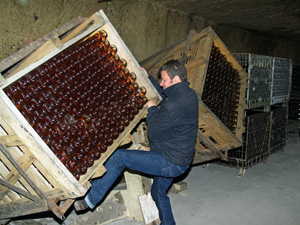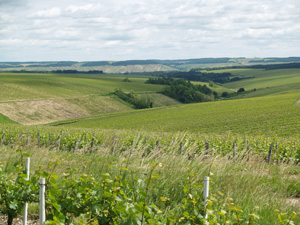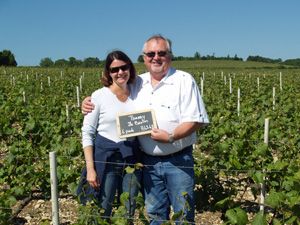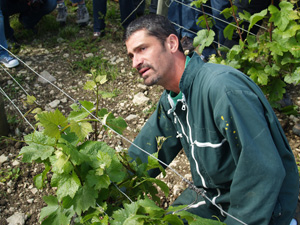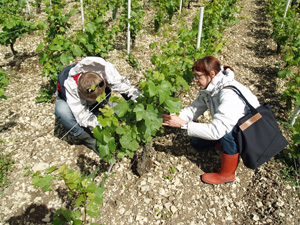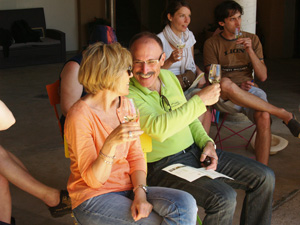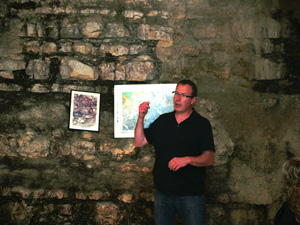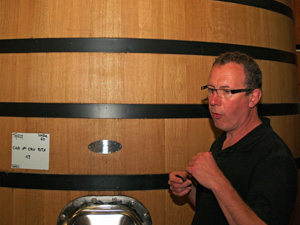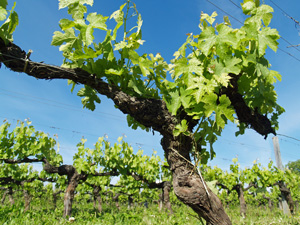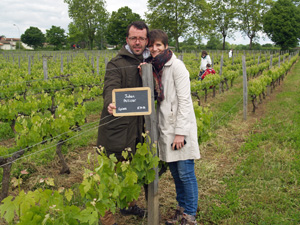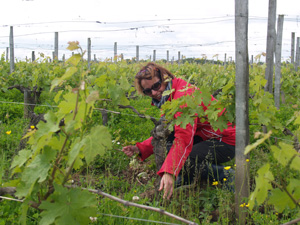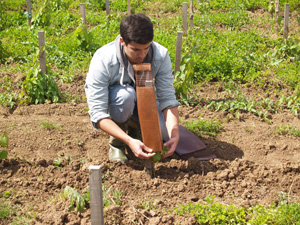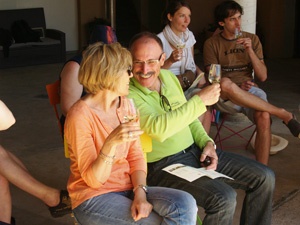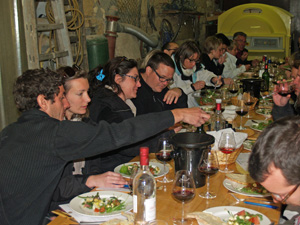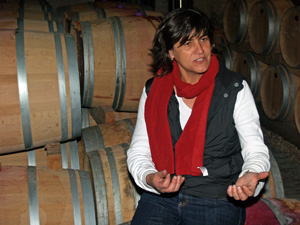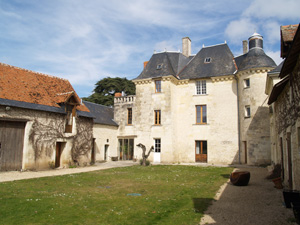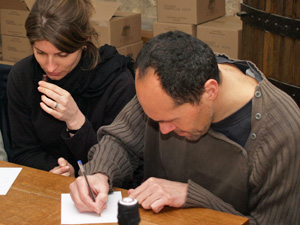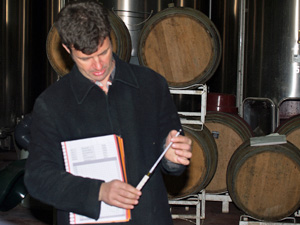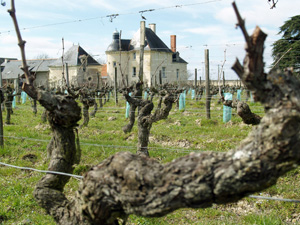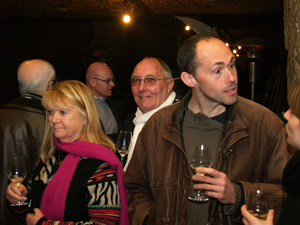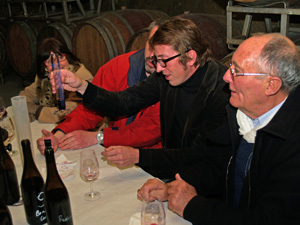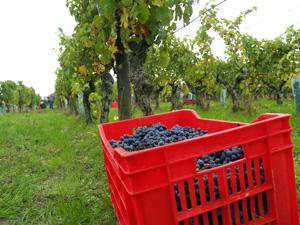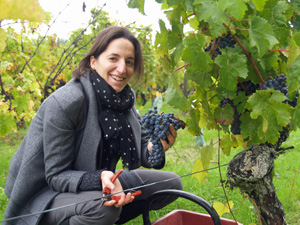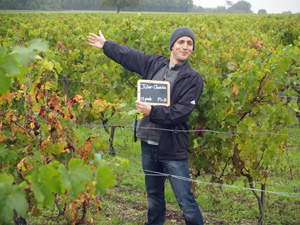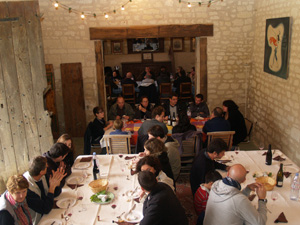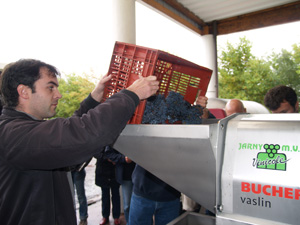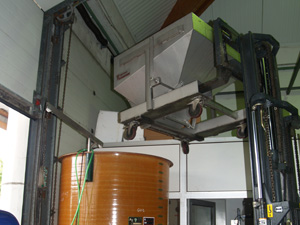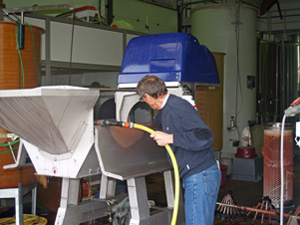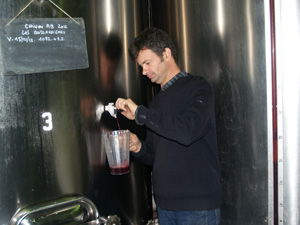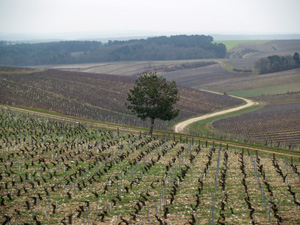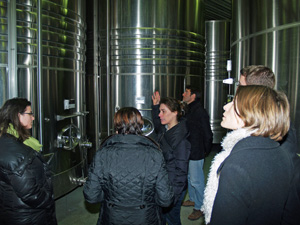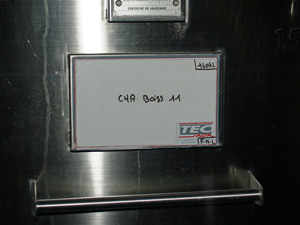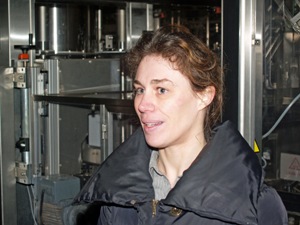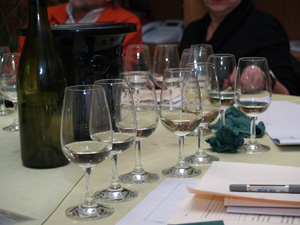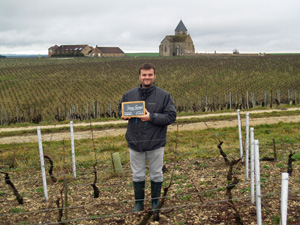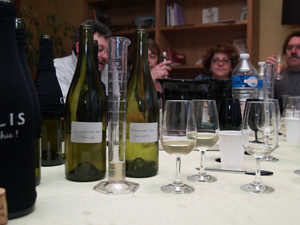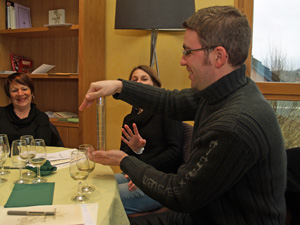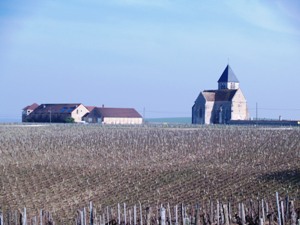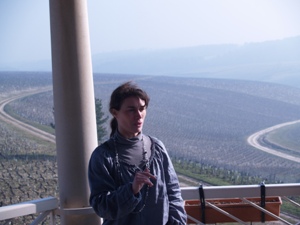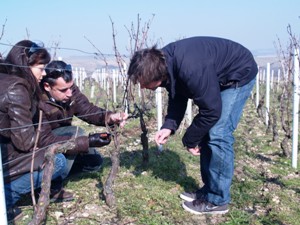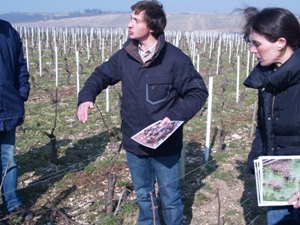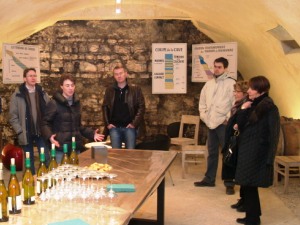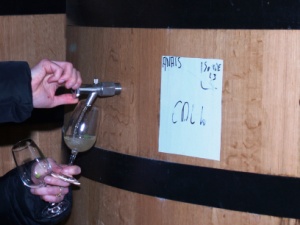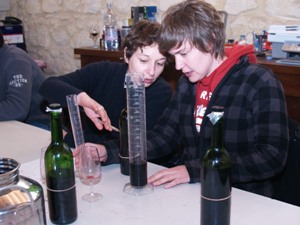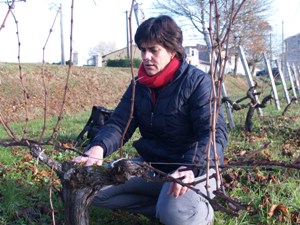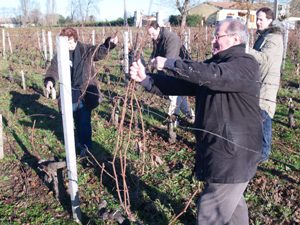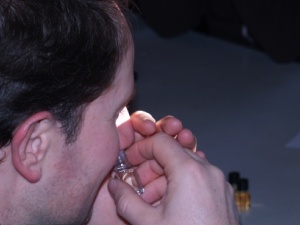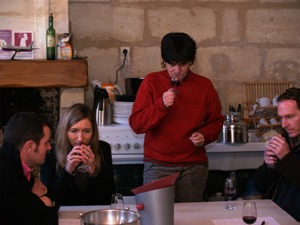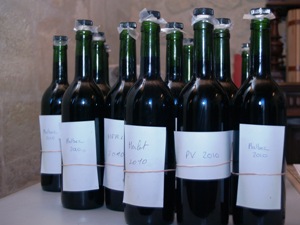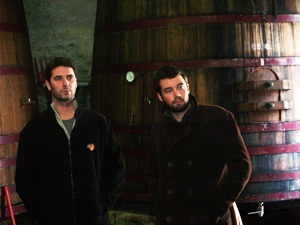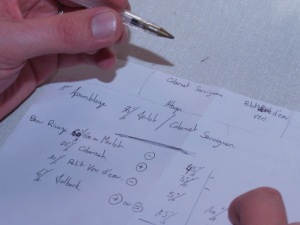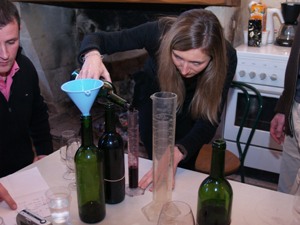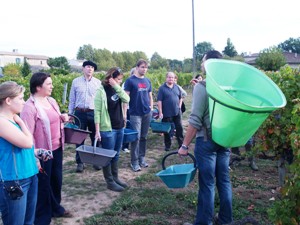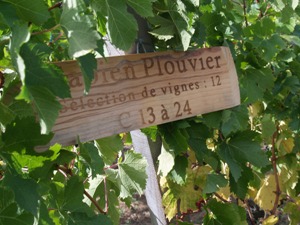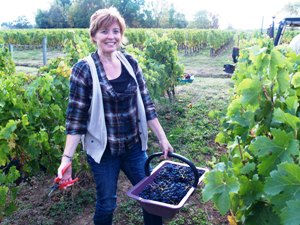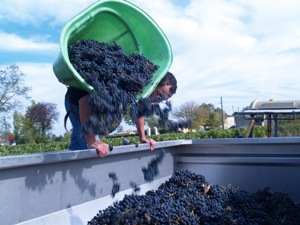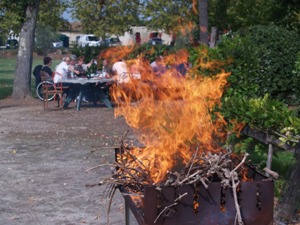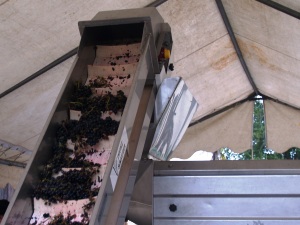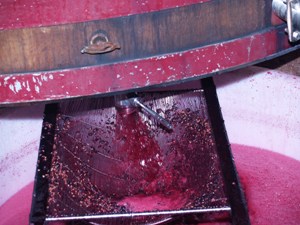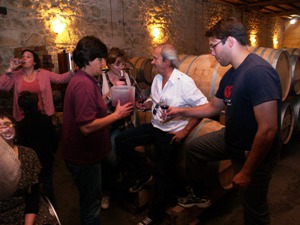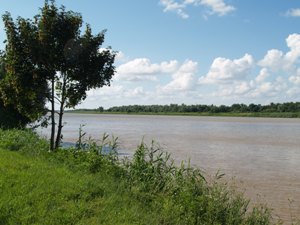We started the day in the Clos de la Bonnelière, the vineyard where the adopted vines of the Gourmet Odyssey clients are located. We took a few minutes to find our vines before getting down to more serious matters!
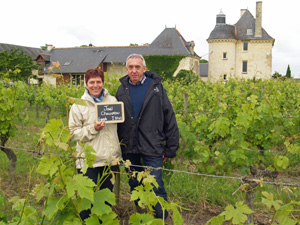
Marc brought us up to date with all of the work that has already been carried out in the vineyard during the winter to protect them from the cold, and to prune them in time for this year's campaign.
The vines are presently about three weeks behind a normal year, so we are still in the process of de-budding and raising the training wires. Marc explained the importance of de-budding to ensure better quality grapes come harvest time by removing the canes that won't produce any fruit or those that will just sap energy from the plant. Then it was time for us to get stuck in!
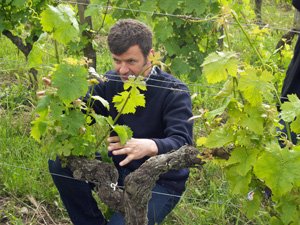
Marc also showed us how to raise the training wires to better support the vine branches and the weight of the grapes to come. We raised the wires and attached them together using clips.
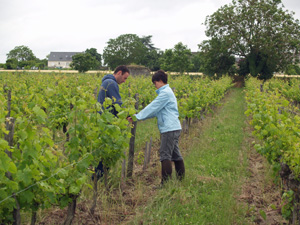
And for the more courageous, we also used some hoes to remove the weeds from around the feet of the vines that the plough blade couldn't get to. It's a physical job, but helps to open up the taste buds for the wine tasting!
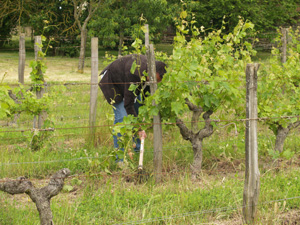
As an aperitif, Marc opened his delicious "Perle Sauvage" sparkling white wine. It's a natural wine with nothing added to it... 100% pure fruit!
During the meal, we continued the tasting with a range of the organic white and red wines that the winery produces, including the "Clos de la Bonnelière", which is the wine selected by Gourmet Odyssey and which won gold medal at the Millésime Bio organic wine fair this year.
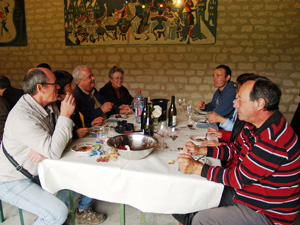
After lunch, we headed to the vinification hall, where Marc showed us the fermentation tanks, and introduced us to the work in the chai.
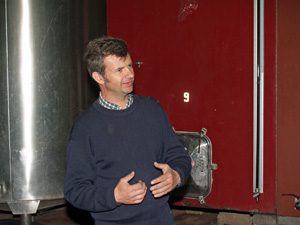
The day finished in the winery's cellar which is located directly underneath the Chinon Fortress. In this magical place, we discovered the barrels used to age the wines, the thousands of bottles that are resting, and the machine used to turn the bottles of sparkling wine.
